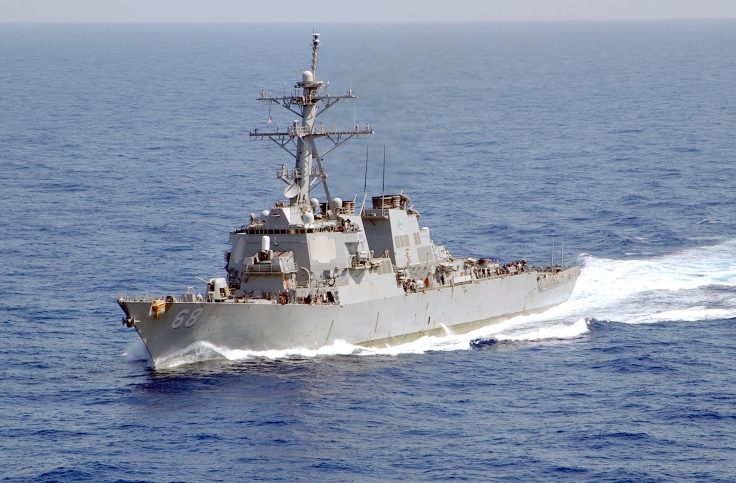An Iranian Navy patrol boat "attempted to blind" a U.S. guided-missile destroyer vessel in international waters late Monday and then conducted maneuvers that almost caused a collision between the warships, according to U.S. Central Command.
The Iranian patrol boat, which CENTCOM said was controlled by Iran’s Islamic Revolutionary Guard Corps (IRGC), conducted the "unsafe and unprofessional" maneuvers in a bid to harass American war ships operating in the region. Iran routinely stalks American war vessels in the region and has come close several times to initiating a conflict. The IRGC, Iran’s paramilitary fighting force, also has threatened repeatedly to attack and destroy American ships operating in international waters near Iran.
"This dangerous action in international waters is indicative of Iran’s destabilizing activity across the Middle East," Col. Joe Buccino, a CENTCOM spokesman, said in a statement explaining the incident.
Iran’s navy has spent great resources updating and building out its lethal capabilities amid an ongoing threat to initiate conflict with U.S. or other Western forces stationed in the region. Iranian military leaders, for instance, announced on Tuesday that their navy forces possess missiles with a range of up to 1,000 kilometers, putting them well within distance of U.S. and Israeli military assets.
Monday’s incident highlights the ongoing threat posed by Iranian forces.
The U.S. Navy ships were working their way through the Strait of Hormuz, a vital shipping lane, "when the [Iranian] patrol boat approached," according to CENTCOM.
"The Iranian vessel attempted to blind the bridge by shining a spotlight and crossed within 150 yards of the U.S. ships—dangerously close, particularly at night," CENTCOM said. "The U.S. ships safely deescalated the situation through the employment of audible warnings and non-lethal lasers. U.S. Navy ships continued their transit without further incident."
CENTCOM says these actions "violated international standards of professional and safe maritime behavior" and increased the likelihood of a collision between the ships.
